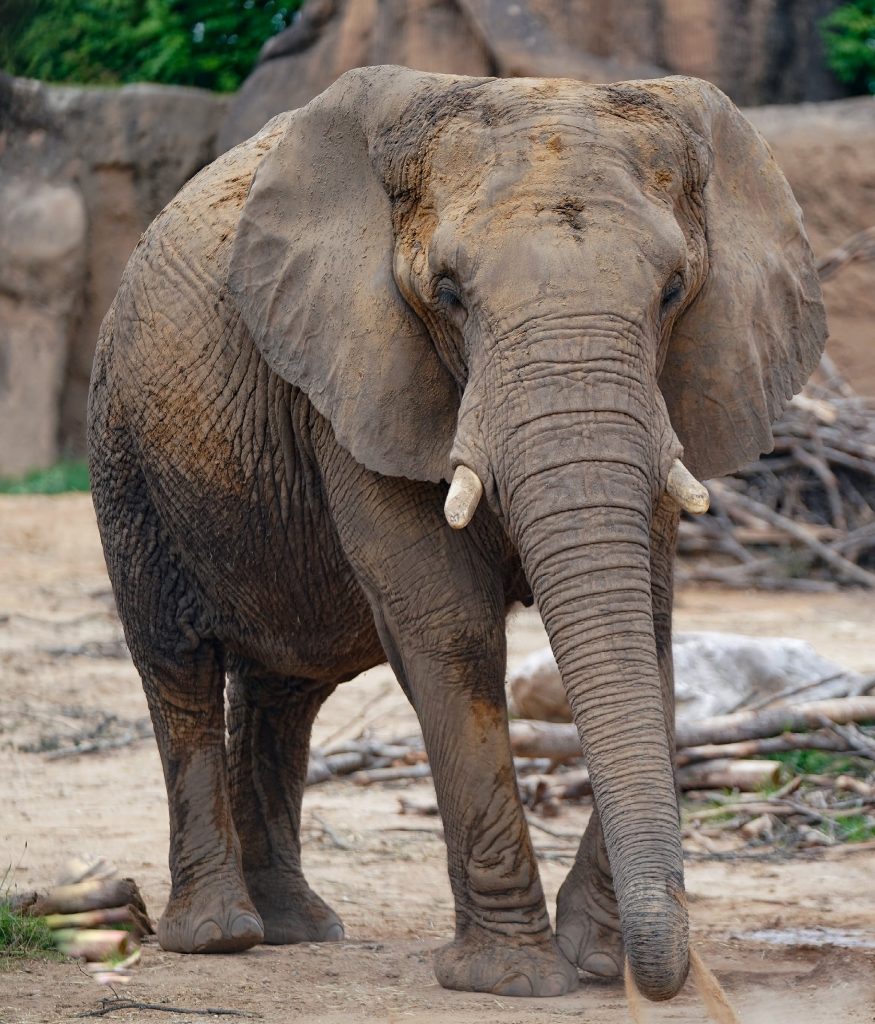
Elephants on the Move
Written By: Scarlett Rockhold, Communications Manager at Zoo Knoxville
In 2022, Zoo Knoxville announced that African elephants Tonka, Jana, and Edie will be moving to The Elephant Sanctuary in Tennessee, as part of their end-of-life care plan. All three of Zoo Knoxville’s elephants are senior citizens. Realizing that Knoxville’s herd will be facing inevitable losses in the near future, Zoo Knoxville made this decision to ensure their individual and unique social needs would be met for the remainder of their lives. The move will allow them to join a larger group of elephants, ensuring continuous companionship for the three aging elephants.
Jana, a 42-year-old female African elephant, will be the first of the zoo’s herd to move to The Elephant Sanctuary in Tennessee. Zoo Knoxville’s expert elephant caretakers have been training Jana to voluntarily enter and stand in a travel crate with positive reinforcement. Now that Jana is comfortable with this routine, Jana will make the move first accompanied by her care staff and veterinarians and be followed later in 2023 by female Edie and male Tonka. While the exact date of her departure is unknown at this time, the move will take place within the next few weeks if her training progress continues.
Moving three elephants over 250 miles across the state is no easy task. It has taken meticulous planning to ensure a successful trip. Check out the 5 necessary steps to moving an elephant below:
1. Learn from the best.
A Zoo Knoxville keeper was sent to Dublin, Ireland to learn from the world leaders in moving elephants. We have also worked with an elephant advisor every step of the way to ensure the success of the move.
2. Find an elephant sized crate.
There are not many crates in the United States big enough to fit an elephant. The crate being used for Jana and Edie, Zoo Knoxville’s female elephants, is on loan from another AZA-accredited zoo. Tonka is the largest male elephant in North America, so a crate his size doesn’t even exist. It will need to be custom built.
3. Training
Zoo staff have been training with Jana daily to prepare her for the move. The trainings build Jana’s confidence, so she will enter the crate on her own and is comfortable being secured inside. Every elephant adapts to change in their own way, so training time is individually based on each elephants pace.
4. Find a hauler skilled in hauling elephants.
In order for a hauler to successfully transport an elephant they need the appropriate equipment including a truck and trailer big enough for the task. They must also map out the route perfectly to plan for any obstacles along the way such as detours, overpasses, etc.
4. Put together a top notch travel team.
Members of the Zoo Knoxville elephant staff will travel with Jana and stay several days to aid in transitioning her into her new home. Veterinarians will travel with the elephant in case of emergency and also to meet with vet staff at The Elephant Sanctuary to ensure continuity of care. A hay hauler will accompany the journey to bring 2 weeks worth of hay to prepare for a diet transition.
Zoo Knoxville and The Elephant Sanctuary in Tennessee are both accredited members of the Association of Zoos and Aquariums (AZA), assuring the continuation of the highest standard of care for them. Other important considerations were the continuity of veterinary care in close consultation with U.T. College of Veterinary Medicine, the range of companionship they can provide, and the short amount of travel required for the move.
You can follow Jana’s journey on Instagram, Facebook, Twitter and Tik Tok @Zooknoxville. Once she’s made the journey and settled into her new home you can also check in on her using The Elephant Sanctuary’s elecam here.